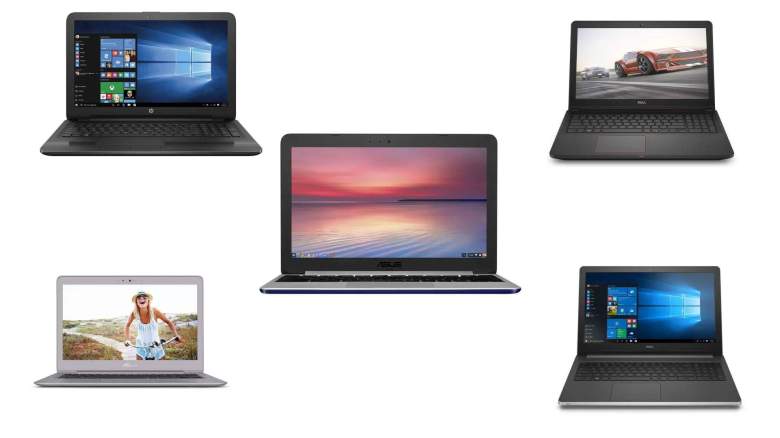
When it comes to choosing a laptop for online coursework, there are so many possibilities and so many things to consider. On the one hand, perhaps most of your needs can be satisfied by creating documents, slideshows and spreadsheets in Google Docs and by browsing the web for online research. In that case, there are Chromebooks to choose from. For more demanding tasks, you might want a Windows laptop — or a Mac, especially if you are in a creative curriculum. You might even want to be sure your laptop can handle gaming after your homework is complete.
To help you choose, we’ve rounded up the top options in all three major categories — Chrome, Mac and Windows — to help you decide what’s best for you. There’s something here for everyone, and at the end of the article, I’ve put together some essential buying advice to help you make a decision no matter which laptop you want to take to your (virtual) class. Keep in mind, though, that if you’re not quite ready for college, the list of recommended laptops for high schoolers is a little different. And while you want to simply hand down an older laptop to middle schoolers, we’ve got some specific buying advice for that younger set as well.
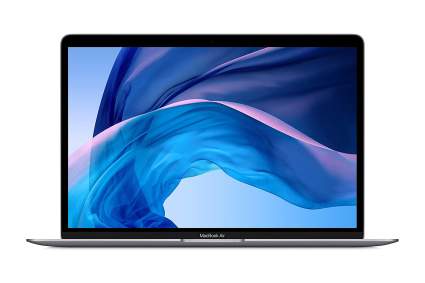
|
Amazon Customer Reviews
|
Price: $1,099.99 Shop at Amazon | Shop now Read our review |
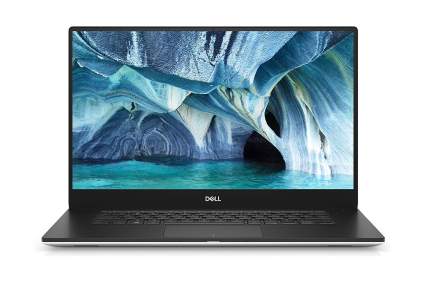
|
Amazon Customer Reviews
|
Price: $939.00 Shop at Amazon | Shop now Read our review |

|
Amazon Customer Reviews
|
Price: $299.97 Shop at Amazon | Shop now Read our review |
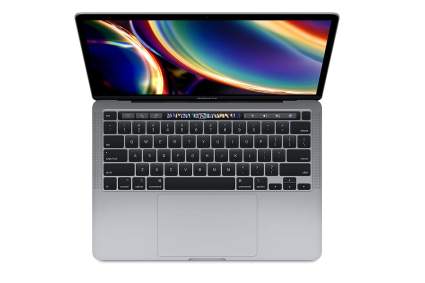
|
Amazon Customer Reviews
|
Price: $1,999.00 Shop at Amazon | Shop now Read our review |
|
|
Amazon Customer Reviews
|
Price: $379.99 Shop at Amazon | Shop now Read our review |
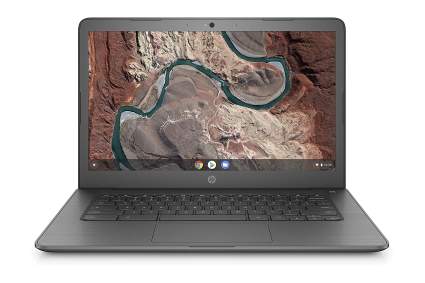
|
Amazon Customer Reviews
|
Price: $206.00 Shop at Amazon | Shop now Read our review |
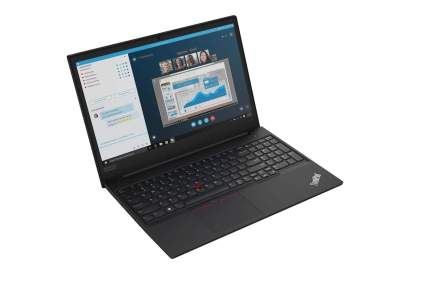
|
Amazon Customer Reviews
|
Price: $949.00 Shop at Amazon | Shop now Read our review |
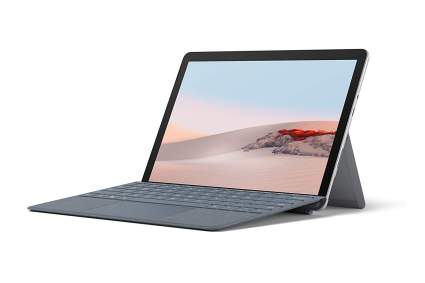
|
Amazon Customer Reviews
|
Price: $489.00 Shop at Amazon | Shop now Read our review |
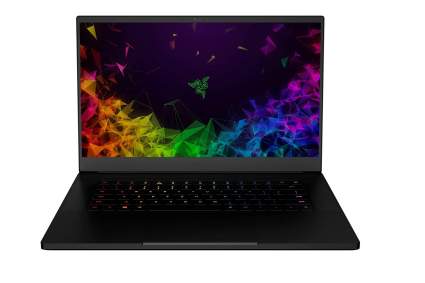
|
Amazon Customer Reviews
|
Price: $3,199.00 Shop at Amazon | Shop now Read our review |
-
1. Apple MacBook Air
Pros:- Improved keyboard
- Retina display
- Good price
Cons:- Not the latest M1 version of the Air
- Limited ports
- Webcam is subpar
Processor Intel Core i5 | RAM 8GB | Display 13 inches | GPU Intel Iris Plus | Hard drive 256GB SSD | Dimensions 11.9 x 8.3 x 0.6 inches | Weight 2.8 pounds
After years of lackluster designs, the early-2000 version of Apple’s MacBook Air is finally worthy of veneration again. And if you’re a student who needs a reliable, user friendly, and highly portable laptop, you could do much worse than this system — particularly if you’re already a part of the Apple ecosystem and prefer Mac’s OS X to Windows.
Something worth pointing out right away: This model is powered by an Intel Core i5 processor — it’s not the latest MacBook Air that’s equipped with Apple’s own M1 CPU. This Intel-powered MacBook Air is still a great laptop, and is much easier to buy than the currently sold-out M1 version from the fall of 2020. It’s also equipped with 8GB RAM and a modest 256GB SSD hard drive. But it is a new 10th generation Core i5, which is an improvement over last year’s MacBook Air. The processor probably helps the system eke out a formidable 12 hours of battery life, which is excellent. And the 13.3-inch screen is a full Retina display, pushing 2560×1600 pixels. Apple knows how to do displays well, and it shows here. As for connectivity, you don’t get a lot. There are a pair of Thunderbolt USB-C ports and a wired headphone jacks.
For a lot of people, the real star of the show is the MacBook Air’s redesigned keyboard. If you know anything about last year’s Air, you probably know that people really hated the butterfly keyboard, which felt bad and was prone to failure. This one has a redesigned scissor keyboard, and it is a dramatic improvement.
Also on board is Touch ID to log in quickly and efficiently, as well as an HD webcam for FaceTime and video conferencing — and that might be one of the laptop’s weakest links, greatly in need of an upgrade to better resolution and image quality. But the bottom line is that it’s a return to form for Apple, and represents an excellent value for its price.
-
2. Dell XPS 15 7590
Pros:- Outstanding 4K display
- Fast processor and plenty of RAM
- Media card reader
Cons:- Expensive
- No Ethernet
- Not a touchscreen
Processor Core i7-9750H | RAM 16GB | Display 15.6 inches | GPU Nvidia GeForce GTX 1650 | Hard drive 256GB SSD | Dimensions 9.3 x 14 x 0.7 inches | Weight 5.5 pounds
The Dell XPS 15 7590 is probably near the top of the price charts for a student laptop, but there are some excellent reasons to spend a little more, if you can afford it. Powered by a serious Intel Core i7 CPU and equipped with a more-than-generous 16GB RAM, it’s ideal for students who need more horsepower for applications in the graphic and design field.
The GeForce GTX 1650 graphics chipset backs that up — this is a full 4K UHD OLED display, with 3840×2160 pixels. Even in 2020, you don’t run into a lot of laptops with this much visual horsepower, so whether you’re running Photoshop, Illustrator, or Cinema 4D, this laptop will get you through your creative classes. And yes, you can play games on this laptop as well.
Despite all that power, this is a fairly trim laptop that only weighs 5.5 pounds and is a mere .7 inches thick. It has an SD card media card reader and USB 3 slot on one side, and a second USB 3, one USB-C, and HDMI port on the other. There’s a high-quality HD webcam integrated into the laptop’s razor-thin bezel (which supports Windows Hello for biometric login), and Wi-Fi 6 is built in — though you can always upgrade to a better webcam, especially if you want to use it for streaming to services like Twitch or YouTube. Perhaps the biggest and most impactful upgrade you could perform to improve this laptop would be adding an external soundcard — ie, an external DAC via one of the laptop’s USB ports.
.
-
3. ASUS Chromebook Flip C434
Pros:- Inexpensive
- Excellent backlit keyboard
- Touchscreen with 360-degree hinge
Cons:- Offline functionality is limited
- Weak speakers
- Not suited for desktop apps or gaming
Processor Intel Core M3-8100Y | RAM 4GB | Display 14 inches | GPU Intel HD Graphics 615 | Hard drive 64GB SSD | Dimensions 12.6 x 8 x 0.6 inches | Weight 3.3 pounds
Who needs Windows (or even a Mac, for that matter)? Lots of people, actually — but there’s a decent chance you don’t. If your coursework is mainly restricted to writing reports, working in spreadsheets, and researching online, you can make do with a Chromebook like the ASUS Chromebook Flip C434 and save a lot of money, not to mention avoid some inevitable Windows-related frustration along the way. This laptop’s very affordable price tag comes courtesy of a modest CPU, meager 4GB of RAM, and barely-there 64GB of onboard storage. Those things would be a serious liability with a full-sized operating system, but the Chrome OS and it’s web-based apps runs just fine.
The Chromebook includes a 14-inch touchscreen running a full HD 1920×1080-pixel display surrounded by a very narrow bezel. That lets the laptop be no larger than a typical 13-inch laptop despite the bigger screen. The screen has a 360-degree hinge that lets you flip it any way you like — it can be tented for presentations, used as a laptop, or flipped backward into a tablet. The keyboard is backlit and comes with a touchpad. On the connector front, you get a pair of USB-C and one USB-A port.
Of course, this is a Chromebook, so the laptop’s real secret weapon is that the internet is its hard drive. It boots almost instantly and you’ll use Google Drive for document storage and Google Docs as a replacement for Microsoft Office. If there’s a downside to all this, your options are limited when you don’t have access to the internet, and you can’t run standard Windows or OS X desktop apps.
Find more ASUS Chromebook Flip C436 information and reviews here.
-
4. Apple MacBook Pro
Pros:- Improved keyboard
- Touch Bar
- Four USB-C ports
Cons:- Not the Apple M1 processor
- Limited ports
- No Wi-Fi 6 support
Processor Intel Core i5 | RAM 8GB | Display 13 inches | GPU Intel Iris Plus | Hard drive 512GB SSD | Dimensions 12 x 8.4 x 0.6 inches | Weight 3.1 pounds
There are two variations of the 13-inch MacBook Pro. A lower end-model has just two USB-C ports, like the MacBook Air, while this one has four ports — two on each side. But no matter which version you get, those are all the ports you get — no Ethernet, for example.
Here’s an important point: This is the version of the MacBook Air from, the spring of 2020, and as much it is powered by a mid-level Intel Core i5 processor, not Apple’s proprietary M1 processor that is all the rage at the moment. But keep in mind that the Intel version of the MacBook is still a great laptop, and has the added advantage of not being back-ordered at the moment. It also includes 8GB RAM and a spacious 512GB SSD. One way to look at this configuration is that while Apple laptops have always been objects of desire, they’re rarely good values. You can get a faster, better equipped Windows-based laptop for the same price.
Instead, what you’re paying for here is a stew of elegant features. First and foremost is the Magic Keyboard, a dramatic improvement over the badly flawed butterfly keyboard used in last year’s model. The Magic Keyboard is a more traditional scissor-style keyboard that’s comfortable to type on and more reliable overall. There’s also the Touch Bar that sits atop the keyboard, which gives you a customizable set of shortcut icons that change depending upon what you are doing and what program is running — along with Touch ID biometric sign-in.
And then there’s the gorgeous Retina display, which features a 2560×1600-pixel resolution and bright, vivid colors with a higher-than-average 500 nit rating. Weighing in at just over three pounds and offering a battery life of about a dozen hours, it’s also quite portable as well.
-
5. Google Pixelbook Go M3 Chromebook
Pros:- Good price
- Great 12 hour battery with quick charge
- Excellent keyboard
Cons:- No fingerprint reader
- Sluggish touchscreen
- No SD card reader
Processor Intel Core M3 | RAM 8GB | Display 13.3 inches | Hard drive 64GB SSD | Dimensions 12.2 x 8.1 x 0.5 inches | Weight 2.3 pounds
It’s low priced as laptops go, but the Google Pixelbook Go M3 Chromebook is a bit expensive as Chromebooks go. It’s price is a reflection of the fact that this is a Google product, and intended to reflect what Google thinks the ideal Chromebook looks like. It’s a little underpowered, with just an M3 processor, but it has 8GB of RAM and a full HD 1920 x 1080 pixel display in the 13.3-inch screen. Google incorporated a comfortable keyboard and generously large trackpad. And it’s incredibly portable, weighing just over two pounds and just a half-inch thick.
The laptop has a beefy battery, able to run for over 12 hours on a charge. It also supports quick charging — 20 minutes plugged into the wall nets you back over two hours of runtime. And for connectivity, there are a pair of USB-C ports.
Of course, let’s not gloss over the fact that this is a Chromebook. The specs are low, but that’s all you need when you’re running Chrome OS and all your work is done using web apps like Google Docs and Google Drive. Even so, the system could have benefited from better specs; the touchscreen and touchpad are both a little finicky, and it’s like caused by some lag because the CPU has trouble keeping up with current events. It’s also missing some modern amenities, like a fingerprint reader or SD card reader. But if your needs are modest and you never need to do anything that can’t be accessed via the internet, this is a solid choice.
Find more Google Pixelbook Go M3 Chromebook information and reviews here.
-
6. HP Chromebook
Pros:- Very inexpensive
- 180-degree display
- Media card slot
Cons:- Slow AMD dual-core CPU
- Screen isn't full HD
- Average battery life
Processor AMD A4-9120 | RAM 4GB | Display 14 inches | Hard drive 32GB SSD | Dimensions 8.9 x 13.3 x 0.7 inches inches | Weight 3 pounds
If your wallet is a primary consideration and you don’t need a WIndows-based laptop for classwork, then the HP Chromebook might be a compelling choice — it’s priced so far under $500 that it’s virtually an impulse buy, even for someone on a limited budget. HP can price this system so low because it’s a Chromebook running a budget processor — AMD’s AMD A4-9120, a dual-core CPU, with just 4GB od fairly slow SDRAM and 32GB of on-board storage. All things considered, it’s not an impressive configuration, but it doesn’t need a lot of power to give you access to Google Docs and other web tools and web sites. And the more conservative specs help it run for over nine hours on a single charge.
The touchscreen has a resolution of 1366×768 pixels and can open 180 degrees to lie completely flat for easy sharing with other people. There’s an HD webcam built into the bezel as well. Need connectivity? The laptop has an SD media card reader, two USB-C, and two USB-A ports. You won’t find, not surprisingly, HDMI or Ethernet.
-
7. Lenovo ThinkPad E595
Pros:- Inexpensive
- Rugged
- Media card reader
Cons:- Small 256GB SSD
- No USB-C
- Too many ports on the right get in the way of the mouse
Processor AMD Ryzen 5-3500U | RAM 16GB | Display 15.6 inches | GPU AMD Radeon Vega 8 | Hard drive 256GB SSD | Dimensions 14.5 x 9.9 x 0.8 inches | Weight 4.7 pounds
Lenovo has switched the architecture in the E590 series — the Lenovo ThinkPad E595 now has fully embraced AMD with a Ryzen 5-3500U CPU and the on-board Radeon Vega 8 graphics chipset. That gives solid mid-tier performance while allowing the laptop to sell at a budget-conscious price. In fact, you get a good set of features for about $750. The 15.6-inch display is a full HD (1920×1080 pixels) display, and the memory can be upgraded, if desired, to 32GB. There’s an HD webcam in the top bezel, and it’s also pretty portable, weighing in at under five pounds.
The port array, unfortunately, is a little weak. The right side of the chassis has a USB 2.0, Ethernet, and a micro SD media card reader. The left side is home to a pair of USB 3 ports, HDMI, and one USB-C — but the USB-C port is the power port for charging the laptop. That’s really disappointing on multiple fronts; Lenovo is fouling your mouse workspace with important connectors, and there’s no USB-C port for connectivity — a major oversight. On the plus side, the laptop is ready for the road with a MIL-STD-810G certification for ruggedness.
Find more Lenovo ThinkPad E595 information and reviews here.
-
8. Microsoft Surface Go 2
Pros:- Inexpensive
- Tablet that runs Windows 10
- 10 hour battery life
Cons:- Keyboard is an additional expense
- CPU and memory are minimal
- Shortable of ports
Processor Intel Core m3 | RAM 4GB | Display 10.5 inches | GPU Intel UHD Graphics 615 | Hard drive 64GB SSD | Dimensions 9.7×6.9x.3 inches | Weight 1.2 pounds
When is a laptop not quite a laptop? When it’s a tablet, as in this Microsoft Surface Go 2. Thew latest version of Microsoft’s home-grown tablet family, this is akin to an iPad; you can use it as a tablet or add a keyboard cover and turn it into the equivalent of a full-powered laptop. On that front, you can think of it as something like the aforementioned iPad, or perhaps a Chromebook. If the vast majority of your computing needs are related to coursework — writing papers, using spreadsheets, and perhaps the occasional presentation, along with online research and webapps, then this is all you need, and your wallet will thank you. But unlike Chromebooks, this system is running Windows 10 and you can install actual Windows apps as well. It’s the best of both worlds.
This Surface Go 2 is built on a modest Intel Core m3 processor and 4GB of RAM, and the 10.5-inch display is a full HD 1920×1280-pixel touchscreen. A built-in kickstand lets it stand up on its own. Unfortunately, you’ll need to add an optional keyboard cover to really get the most use out of this system; it’s an unfortunate oversight that adds to the cost of getting up and running.
On the plus side, you get plenty of runtime from the Surface Go 2 — it’ll last for more than 10 hours on a charge. And you get a minimal collection of ports: a USB-C and SD card media card reader is about the extent of it. And the Surface Go 2 is a refined machine, easily on par with something like the iPad for tablet usability, and something that looks and generally behaves like a machine that’s pricier than it really is.
Find more Microsoft Surface Go 2 information and reviews here.
-
9. Razer Blade 15
Pros:- Fast 240Hz display
- Windows Hello biometric lock
- All-aluminum thin case
Cons:- All the important ports are on the right
- Hard drive just 512GB
- No 4K display
Processor Intel Core i7-8750H | RAM 16GB | Display 15.6 inches | GPU Nvidia GeForce RTX 2080 Max-Q | Hard drive 512GB SSD | Dimensions 9.3 x 14 x 0.7 inches | Weight 4.6 pounds
Razer has built this version of the Razer Blade 15 around the Max-Q version of the RTX 2080 graphics card. Close to the fastest GPU money can currently buy, it’s sized for the relatively thin frame of the Blade 15. The RTX 2080 is driving a super-fast 240Hz IPS panel that’s displaying a FHD 1920 x 1080-pixel screen, but there’s no G-Sync here (though at 240Hz, it’s not clear it’s needed). That’s accompanied by an Intel Core i7-8750H and a 512GB hard drive — probably enough storage space for most users. If you ever find 16GB of memory isn’t enough for you, this laptop is easily expandable to as much as 64GB.
The laptop itself is gorgeous, with sharp, clean lines all over the laptop. Sometimes when a laptop has a price tag over $2000, the money is all on the inside. And while you get a ton of actual performance value in this system thanks to the Intel Core i7-8750H processor and aforementioned graphics, Razer clearly made sure the laptop looks the part as well. Razer is well-known for quality builds, and this laptop feels premium from top to bottom. It has a unibody all-aluminum case and the lid has a relatively narrow bezel protecting the screen. Speaking of bezel, the laptop includes a Windows Hello-compatible webcam, so you can unlock it with biometric face recognition.
Likewise, the ports are almost all here, though they’re in weird places. You’ll find HDMI, DisplayPort, USB 3,0 and USB-C ports on the right side of the case, with more USB 3.0 ports on the left. Good luck not snagging that rat’s nest of wires on your mouse. That said, there are some other welcome features in the Razer Blade 15. Expect to get close to five hours of runtime when using the laptop for ordinary productivity tasks, and that’s even including using the keyboard’s per-key RGB lighting.
Not only is this a formidable gaming PC, it has more than enough features and horsepower to service as a platform for creative applications — designers, artists, and students can use this system for media creation and video editing, for example.
What to Look for When Shopping for a Laptop for Online Classes
Typically when you shop for a laptop, you start by comparing your budget to specifications like the CPU, memory, and hard drive size so you can figure out how fast of a computer you can afford. If you're an online student, though, you can begin with a different question: Do you need a Mac, PC, or Chromebook?
The way you answer that question determines how much money you need to spend. A Chromebook is the least pricey way in, but also the most limited. If the vast majority of your coursework is online in some form, a Chromebook might be just the thing. Designed mainly for duty as a connected computer, it relies on online tools like Google Docs for word processing, spreadsheets, and presentations. You can run web apps in a browser window and do your research online.
But if you absolutely must install traditional programs on your laptop, you'll need to go with Windows or a Mac. And you probably already know when a Mac makes sense -- when you're in a graphical or creative curriculum. Yes, you can use Windows as a graphic design student. But if your coursework requires you to use Final Cut, you may need a Mac regardless.
After you know which of the three kinds of laptops you'll be investing in, consider the specs. Can you afford an Intel Core i3, Core i5, or Core i7, for example? The faster the CPU, the better your system, will run, but don't break the bank in the process.
Those are some of the essential considerations. Other things to keep in mind: Does the laptop have enough ports, and the kinds of ports you need, like USB 3 and USB-C? How big and heavy is it, especially if you want to travel with the laptop to the local coffee shop to work away from home? Does the battery last long enough for your needs?
The Best Value in a Laptop for Online Classes
The laptop you choose depends in equal parts on whether you need a Chromebook, Windows, or Mac and how much money you have to spend on the rig. If you want to go with a Chromebook -- and that is the best choice if you want a worry-free, "it just works" laptop for online coursework and never need to install any software -- then the Asus Chromebook Flip C434 is in the sweet spot between price and performance. I wish I could recommend the Google PixelBook Go, but it's simply too pricey for what features it offers. But if you need a Chromebook on a very limited budget, you'll be hard-pressed to find a better deal than the HP Chromebook.
Need a Mac? Most students will be best served by the MacBook Air, though the MacBook Pro is a smart, if pricey, choice if you are doing creative projects that require a lot of graphical performance. Use this guide: If Keynote is the heaviest app you use, choose the Air. Need to fun Finalcut? It's time for the MacBook Pro.
Finally, when it comes to a Windows laptop, you have the most options, and your choice really depends on a slew of factors, including how much performance you need for your coursework and if your laptop will do double duty for gaming when your homework is done. A solid, modest choice is the Lenovo ThinkPad E595 -- but if you have the money and want a real powerhouse, go with the Razer Blade 15.
See Also: